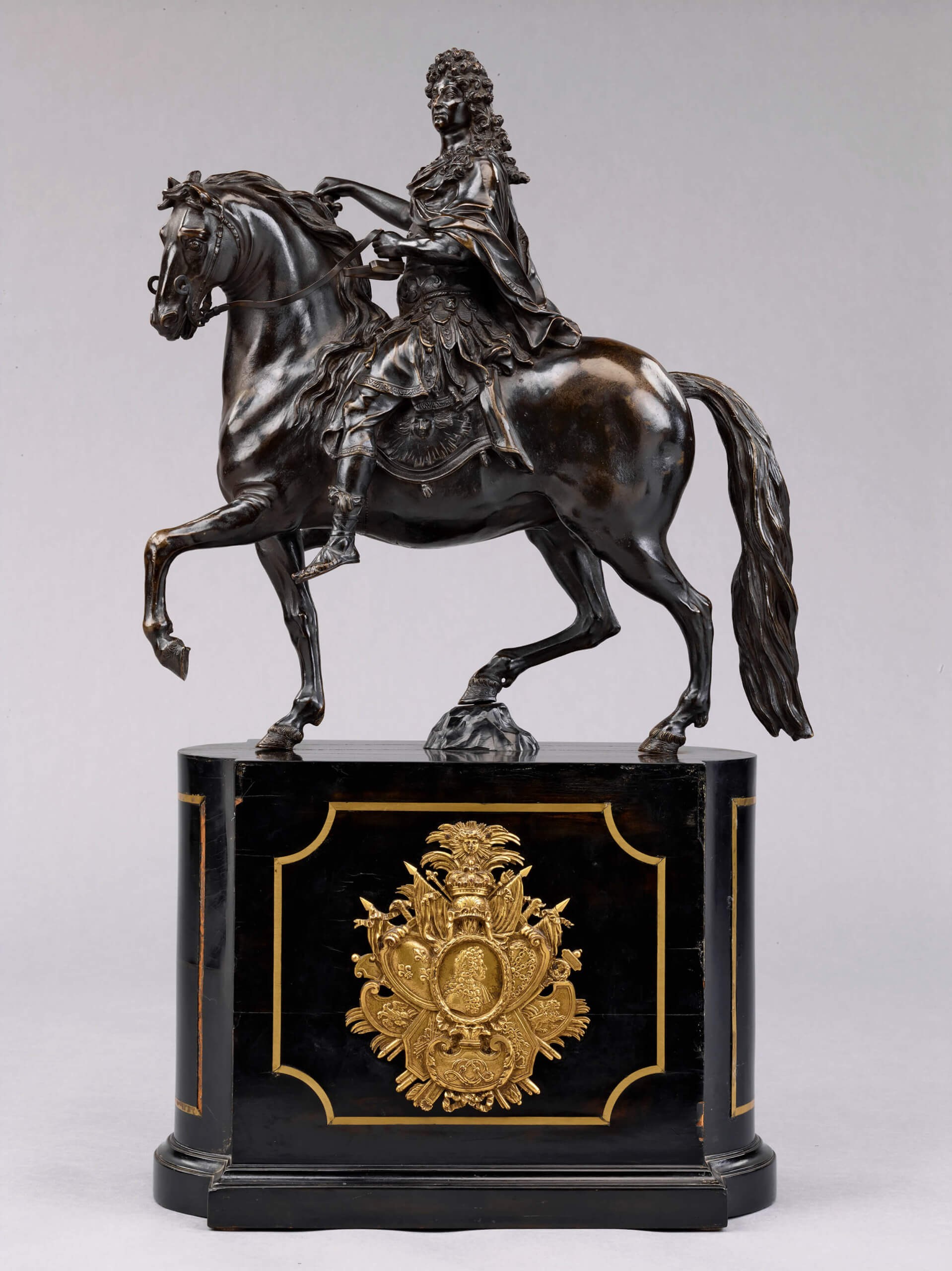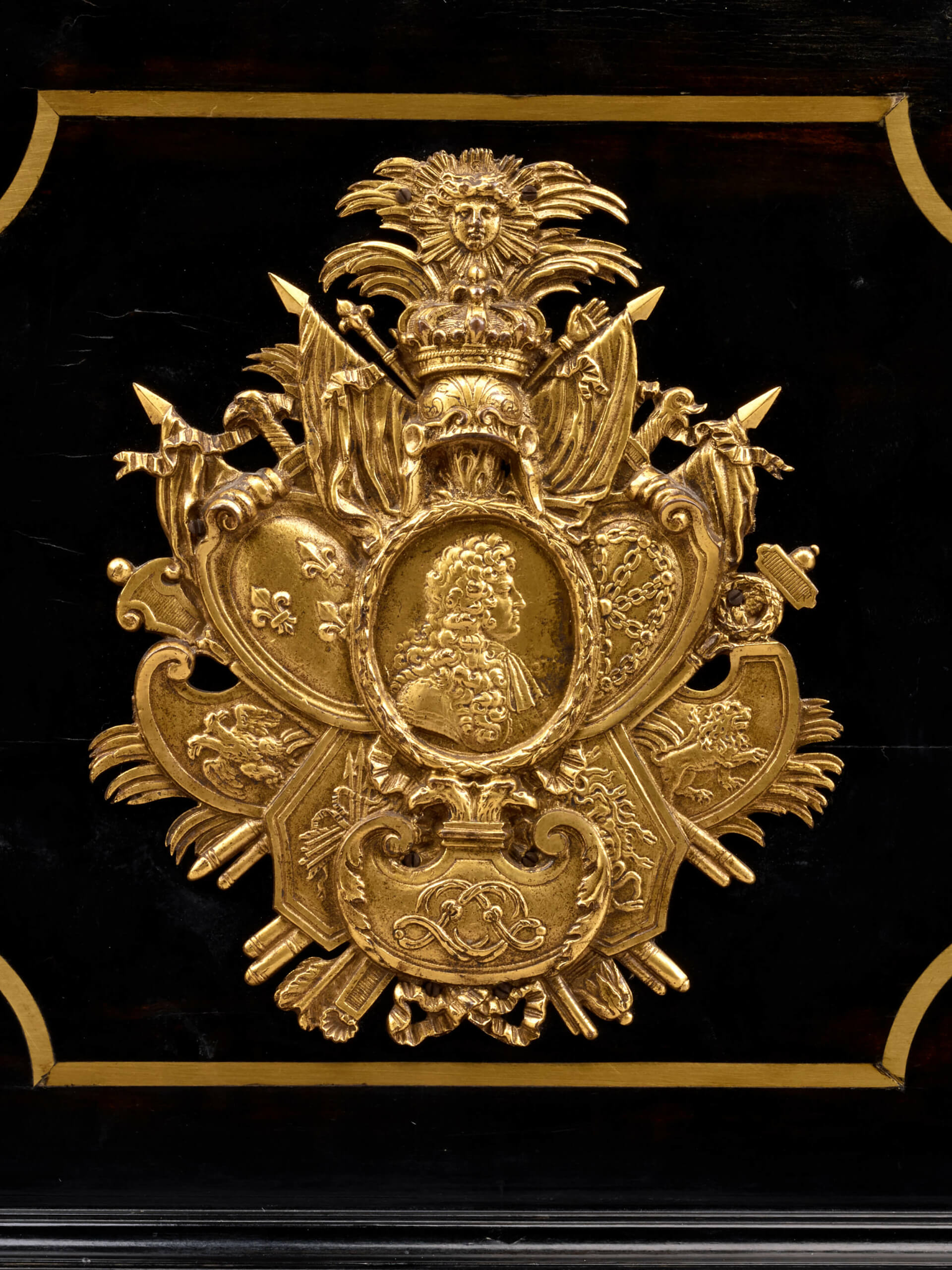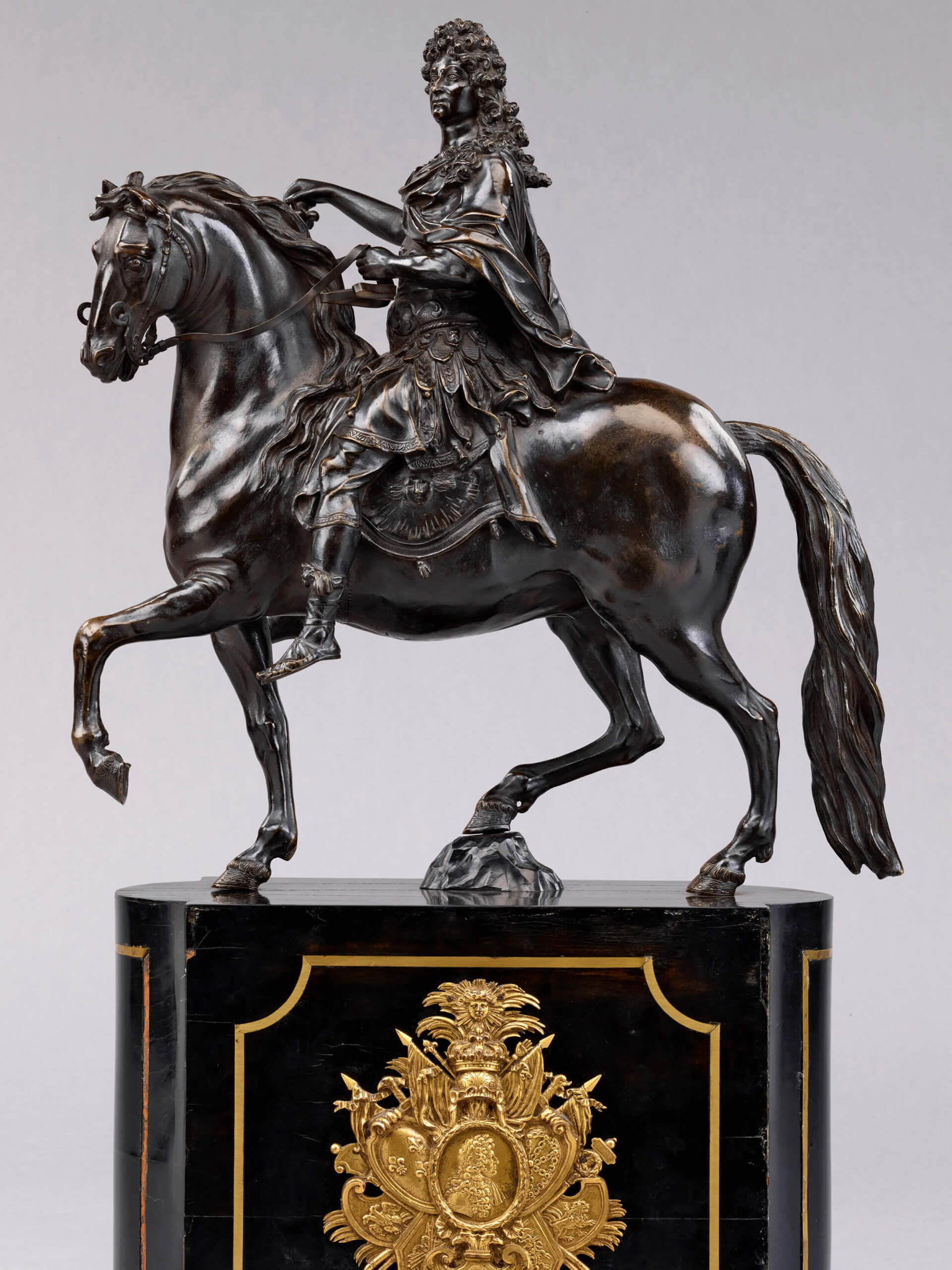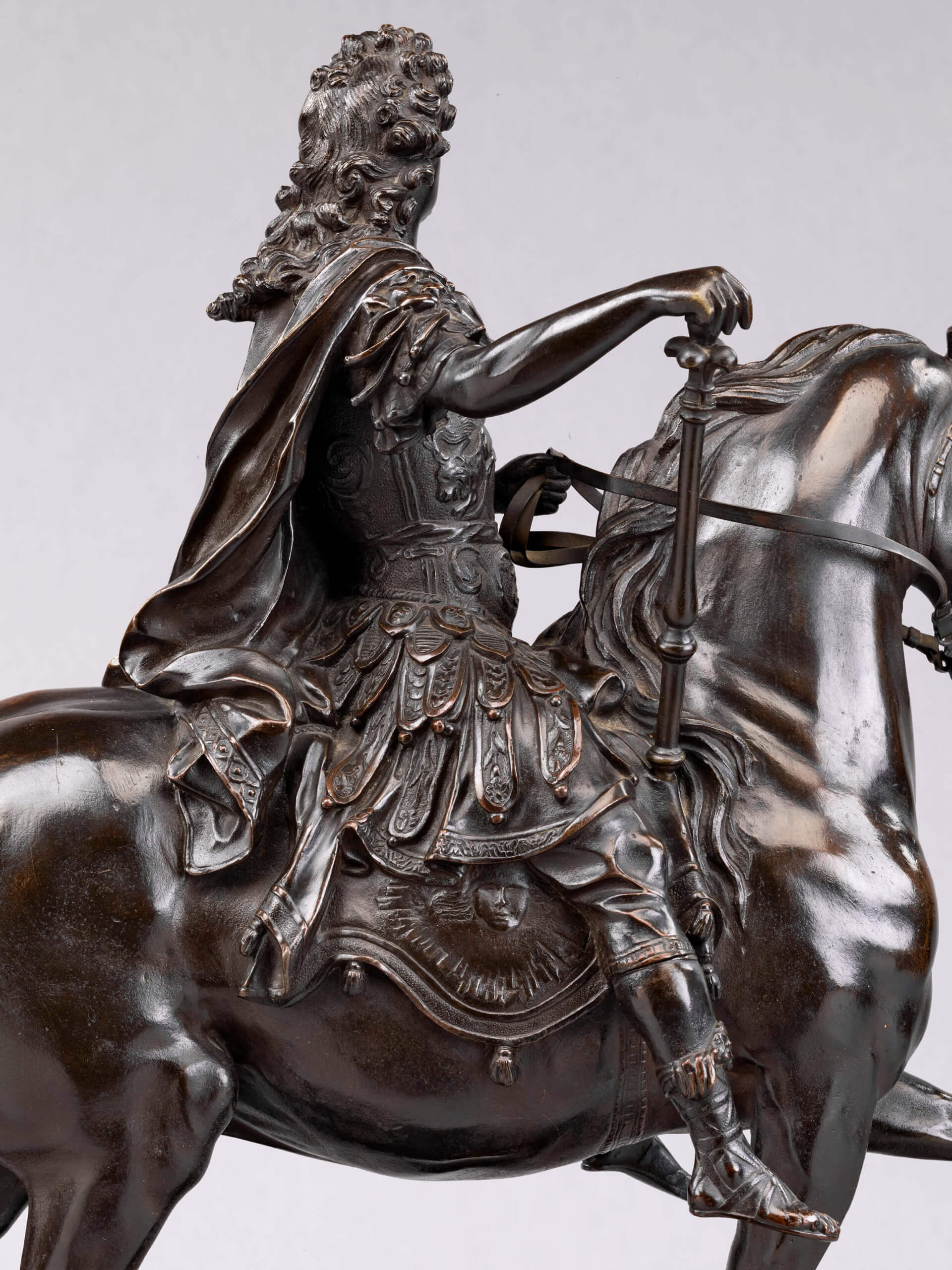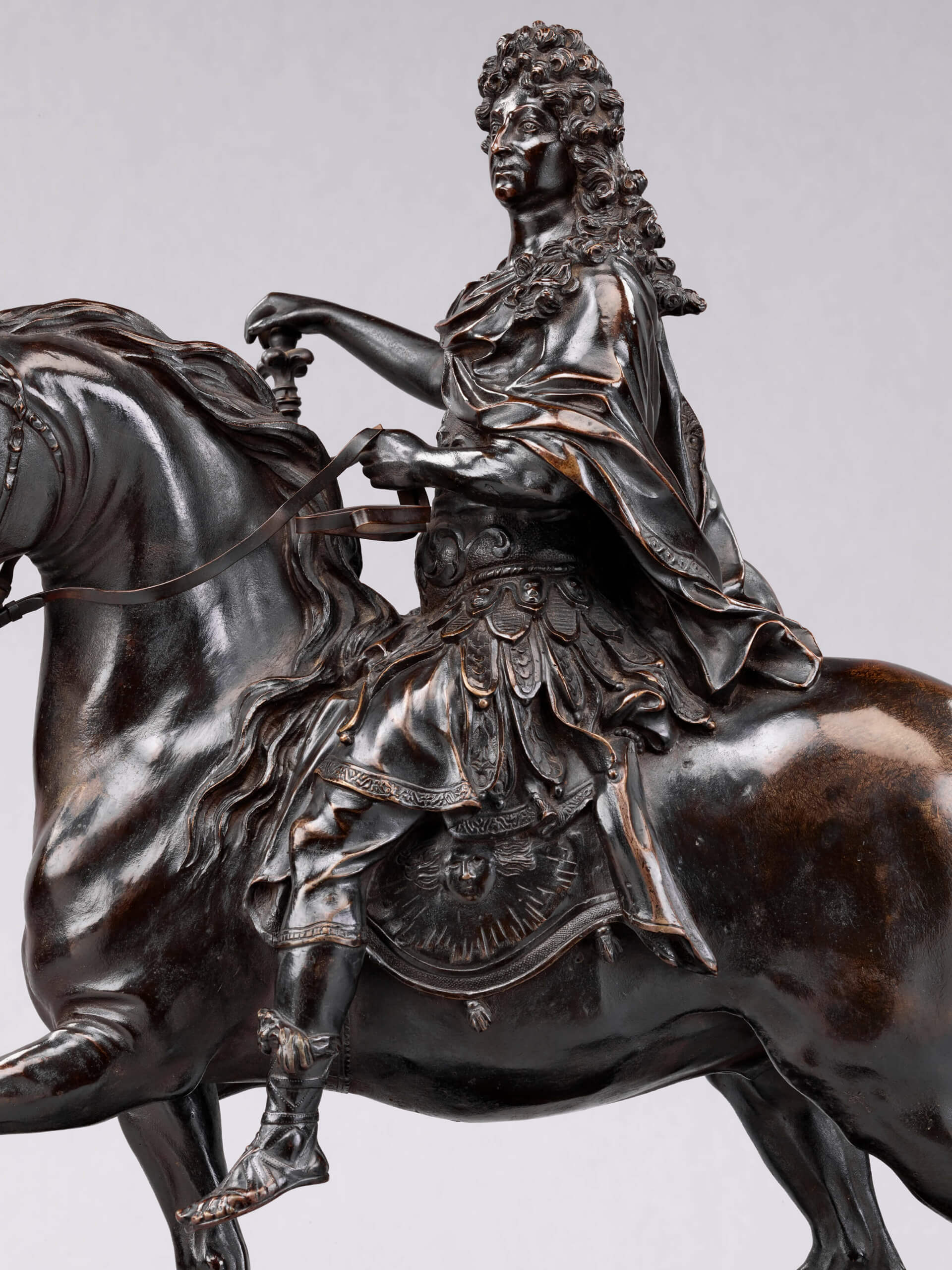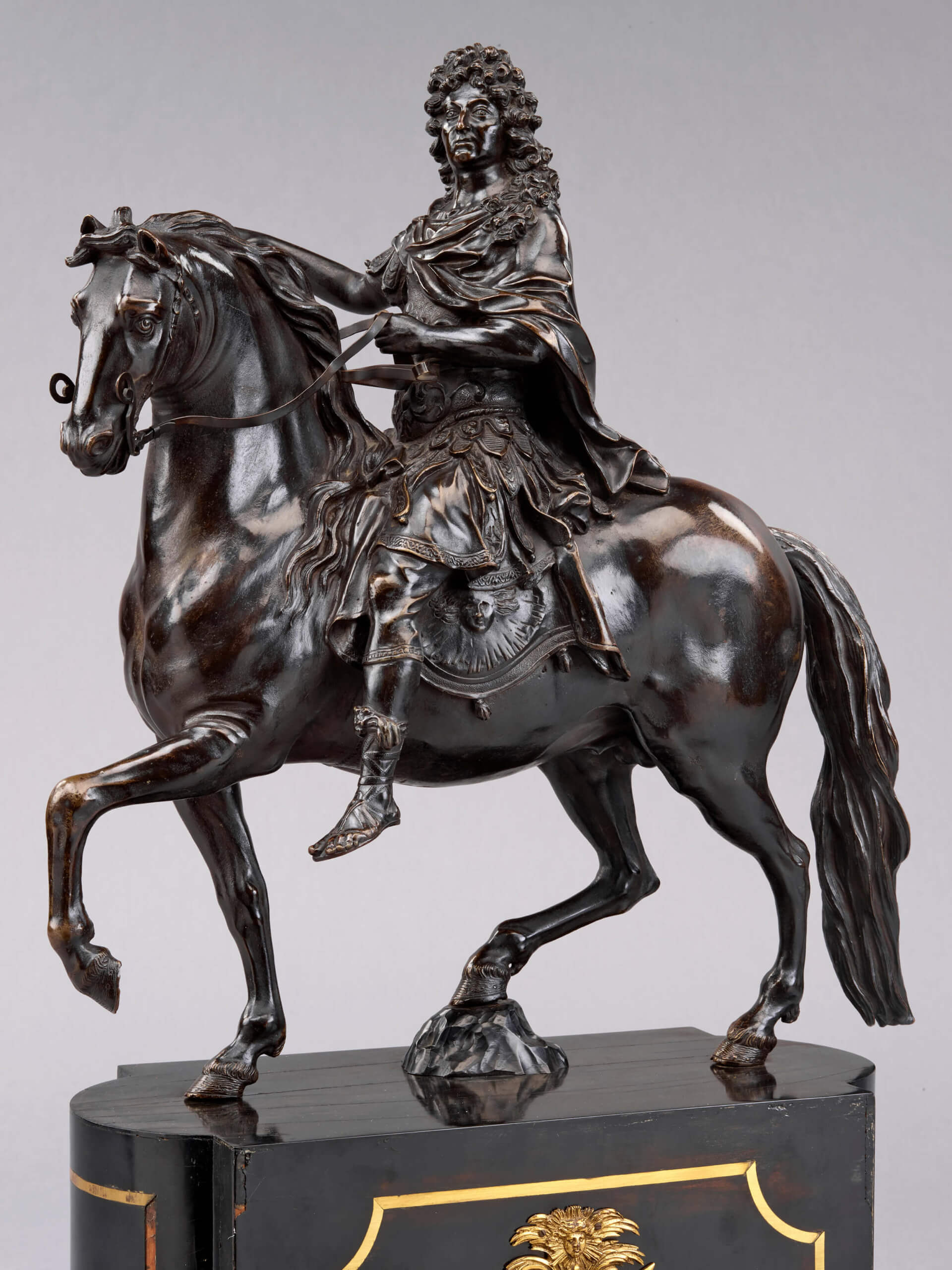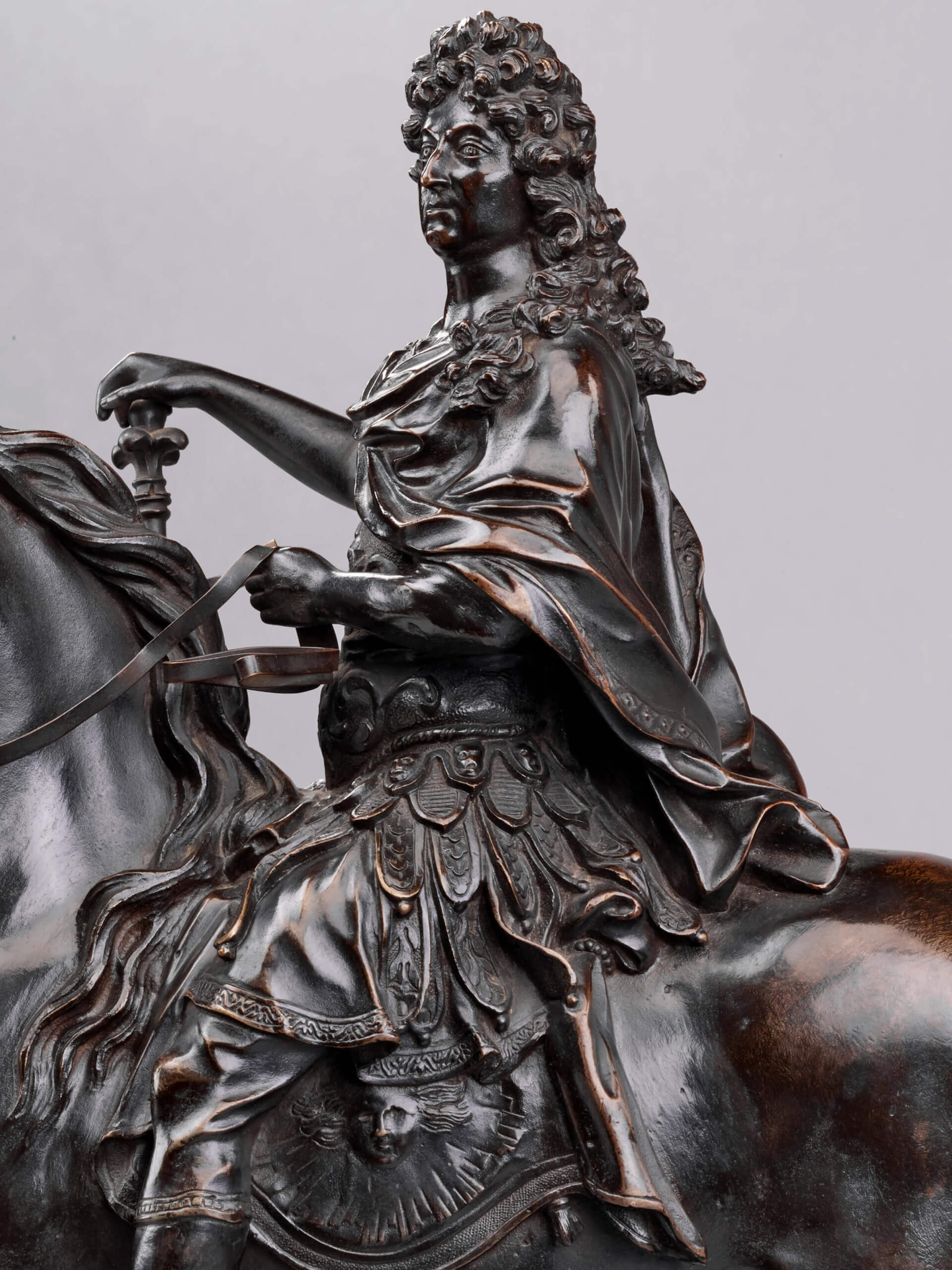

Bronze with a brown patina.
Ebonized wood base adorned with chiselled and gilded bronze trophies with the arms of France and Navarre, each presenting in its center a medallion with a profile portrait of Louis XIV.
H. 44 cm. (17 ½ in.); total H. with the base: 71 cm. (28 in.).
PROVENANCE: collection of Edmond Rostand (1868-1918); collection of Jules Strauss (1861-1943), auction in Paris, galerie Charpentier, Me Etienne Ader, 27 May 1949, lot n° 83.
EXHIBITION: Europäische Barockplastik am Niederrhein: Grupello und seine Zeit, [auteurs : Else Rümmler, Christian Theurekauff,… , préface de Wend von Kalnein], Düsseldorf, Kunstmuseum (actuel Museum Kunstpalast), 1971, cat. n° 327.
LITERATURE : Stéphane Faniel, Le Dix-septième siècle français, Collection Connaissance des Arts, Paris, 1958, p. 163, repr.; Hélène Demoriane, « L’importance du socle, Tout objet d’art gagne en valeur décorative s’il est bien soclé », Connaissance des Arts, n° 108, février 1961, p. 70, fig. 15 ; Lorenz Seelig, Studien zu Martin van den Bogaert gen. Desjardins (1637-1694), thèse de doctorat dactylographiée, Munich, université Ludwig-Maximilian, 1980, p. 537, cat. n° LIV/24G; M. Martin, Les Monuments équestres de Louis XIV. Une grande entreprise de propagande monarchique, Paris, 1986, p. 143, fig. 79-80, repr.; François Souchal, French Sculptors of the 17th and 18th centuries, The reign of Louis XIV, Volume *, A-F, Londres, 1977, p. 258-259, cat. n° 47, et Supplementary Volume ****, A-Z, Londres, 1993, p. 74-76, cat. n° 47 (Additions); Geneviève Bresc-Bautier, Guilhem Scherf, Bronzes français de la Renaissance au Siècle des Lumières, catalogue d’exposition, Paris, 2008, p. 318-321.
Originally from Breda, where he was born in 1637, Martin Den Bogaert, who would Frenchify his name as Desjardins, trained with Peter Verbruggen in Antwerp during several years. Aged 20, he left to Paris where he was warmly welcomed by the community of sculptors of the capital. Major orders rapidly flew in, from private individuals as much as religious establishments and the consecration of Desjardins came when he was elected at the Royal Academy of Painting and Sculpture in 1671. He may be considered as one of the best sculptors of the Bâtiments du Roi, and distingued himself through works as exceptionally spirited as they were masterful, like his statue of Diane, an allegory of the evening that he created for the Great Commission of 1674 in Versailles.
